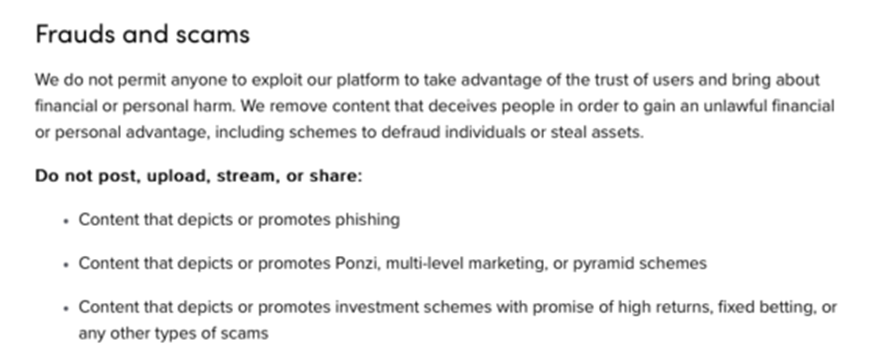What Is Multi-Level Marketing (MLM)?

Multi-Level Marketing (MLM) is a type of business model that involves a company distributing its products or services through a network of independent distributors or salespeople. MLM companies rely on their existing members to recruit new members into the business, forming a hierarchical structure of multiple levels of salespeople.
In an MLM scheme, a distributor earns commissions not only from their own sales but also from the sales made by the members they recruit. This creates a network of salespeople who are incentivized to recruit more people into the system to increase their earnings. As the network grows, so does the distributor’s potential for earning commissions.
MLM companies often use a range of tactics to recruit new members, including hosting recruitment events, offering bonuses or prizes for signing up, and using social media to reach a wider audience. Many MLMs also offer training and support to their members, such as coaching on how to sell products or build a successful team.
While MLMs can offer opportunities for individuals to earn money and build their own business, there is often controversy surrounding the industry. Critics argue that MLMs can be exploitative, with some companies requiring members to purchase a minimum amount of products each month in order to qualify for commissions. Additionally, the focus on recruitment can sometimes overshadow the actual sale of products or services, leading some to describe MLMs as pyramid schemes.
It’s important for individuals considering joining an MLM to thoroughly research the company and its products, as well as the compensation plan and any potential risks or costs involved. While MLMs can offer a way for individuals to earn money on their own terms, they may not be suitable for everyone.
Why Should You Quit MLM?
1. 99% of People in an MLM Lose Money

According to a study conducted by Jon Taylor, who has a PhD in business, out of 350 MLMs that he analyzed, 99% of the people who joined these companies ended up losing money. This statistic is not limited to just a few of the worst MLM companies; it applies to all MLMs, regardless of their reputation or products.
The reason for this high failure rate is that MLMs often require new members to invest significant amounts of money upfront. This can include purchasing starter kits, inventory, and other materials required to start selling products. Additionally, many MLMs require members to maintain a minimum monthly purchase volume to remain active in the business and be eligible for commissions. These expenses can quickly add up and often exceed the amount of money that members make from selling products.
Furthermore, the compensation plans offered by MLMs are often structured in a way that benefits the top-level members more than those at the bottom. As a result, the majority of members are unable to earn a sustainable income, and only a small percentage of top earners make significant profits.
Given these factors, it’s not surprising that so many people who join MLMs end up losing money. It’s important to carefully evaluate any MLM opportunity before investing time and money, and to be wary of any claims or promises that seem too good to be true. Ultimately, quitting an MLM may be the best course of action for those who find themselves struggling to make a profit or who are uncomfortable with the business practices of the company.
2. MLM High Dropout Rates

One of the biggest challenges of being in an MLM is the high dropout rate. According to industry statistics, at least 50% of MLM representatives drop out within their first year of joining the company. This is often due to the difficulty of making sales and recruiting new members, as well as the financial burden of investing in the business.
The attrition rate continues to increase over time, with a minimum of 90% of representatives leaving the MLM within five years. By the 10-year mark, it’s estimated that only those at or near the top of the MLM hierarchy have not dropped out. This means that at least 95% of representatives who join an MLM will ultimately leave the company.
There are several reasons for this high dropout rate. Firstly, MLMs often require a significant investment of time and money, with no guarantee of success. Members are often required to purchase a starter kit or inventory, as well as spend time attending training sessions and recruiting new members. These expenses can be difficult to sustain, especially if sales are not consistently high.
Secondly, MLMs often rely on a hierarchical structure that favors those at the top of the organization. The compensation plan is often structured in a way that rewards those who are able to recruit the most new members and make the most sales. This can create a highly competitive and cutthroat environment, where those who are unable to keep up are quickly left behind.
Finally, there is often a lack of transparency and accountability within MLMs, which can lead to disillusionment and frustration among members. Members may feel misled by promises of easy profits or a flexible work schedule, only to find that the reality is much different.
Given these challenges, it’s understandable why so many people choose to drop out of MLMs. It’s important to carefully evaluate any MLM opportunity before investing time and money, and to be realistic about the potential risks and challenges involved.
3. Social media platform TikTok has banned MLMs

Social media platform TikTok has recently taken a strong stance against MLMs. Under the “Frauds and Scams” section of its community guidelines, TikTok explicitly states that it does not permit anyone to exploit its platform to take advantage of users’ trust and cause financial or personal harm. This includes the promotion of Ponzi schemes, multi-level marketing, and pyramid schemes.
TikTok’s decision to ban MLMs is significant because the platform has become increasingly popular among young people, who are often targeted by MLMs. These companies often use social media platforms to recruit new members, and TikTok has been no exception.
MLMs have long been criticized for their deceptive business practices and the harm they can cause to individuals and communities. By banning MLMs, TikTok is taking a strong stand against these companies and their harmful practices.
This move is also likely to have a significant impact on the MLM industry. With TikTok’s ban in place, MLMs will no longer be able to use the platform to recruit new members or promote their products. This could make it harder for MLMs to attract new members, and could potentially lead to a decline in their overall influence and reach.
Overall, TikTok’s decision to ban MLMs is a positive development for consumer protection and could help prevent many people from falling victim to these companies’ deceptive practices.
4. Many MLMs are struggling post-pandemic

The COVID-19 pandemic has had a significant impact on many industries, and multi-level marketing (MLM) companies are no exception. According to Bloomberg, many MLMs are struggling post-pandemic, with declining revenue and earnings as they struggle to attract and retain distributors to sell their products.
One of the main challenges facing MLMs during the pandemic has been the inability to conduct in-person sales events and recruit new members through face-to-face interactions. This has forced many MLMs to rely on digital marketing and online sales, which can be less effective than traditional methods.
Additionally, the economic downturn caused by the pandemic has led many consumers to cut back on spending, which has hurt MLMs’ sales. This has been compounded by the fact that many MLMs sell discretionary products, such as beauty and wellness items, which may not be seen as essential during an economic crisis.
The pandemic has also led to increased scrutiny of MLMs’ business practices, as more people have become aware of the potential risks and challenges associated with these companies. This increased awareness has led to greater skepticism among consumers and potential recruits, making it harder for MLMs to attract new members.
Overall, the pandemic has had a significant impact on the MLM industry, with many companies struggling to adapt to the changing economic and social landscape. As the world continues to recover from the pandemic, it remains to be seen how the MLM industry will evolve and whether these companies will be able to regain their pre-pandemic momentum.
5. MLMs Alienate You From Your Family and Friends

One of the biggest challenges of being involved in a multi-level marketing (MLM) scheme is the potential strain it can put on your relationships with friends and family. MLMs often encourage their members to promote their products to their social networks, which can lead to members becoming overly aggressive and persistent in their sales tactics.
This can cause tension and even resentment between members and their loved ones. Friends and family may feel pressured or even manipulated into buying products they don’t want or need, which can create awkward or uncomfortable situations.
Furthermore, MLMs often encourage their members to recruit new members into their downline, which can further strain relationships. Members may feel obligated to pressure their friends and family to join the scheme, which can create even more tension and resentment.
In some cases, MLMs can even lead to members becoming isolated from their social networks altogether. As members become more and more focused on their MLM business, they may spend less time with friends and family and become increasingly distant from the people who were once important to them.
Overall, the social and emotional costs of MLMs can be high, and it’s important to consider the impact that involvement in these schemes can have on your relationships with loved ones. While MLMs may promise financial rewards and the potential for success, it’s important to weigh these benefits against the potential costs and risks.
A Pillar of Strength in Golden Years: 10 Paths on How Regular Screenings Uphold Your Health
In the evocative voyage of life, the golden years emerge as a time to relish the fruits of decades of labor, to bask in the
Unlock the Secret to Sweet Dreams: 10 Ways of Enhancing Sleep Quality as You Age
Share on facebook Facebook Share on twitter Twitter Share on linkedin LinkedIn Share on pinterest Pinterest Share on telegram Telegram Share on whatsapp WhatsApp Share
Building Bridges, Not Walls: 10 Methods of Mastering the Art of Cultivating Social Connections in the Golden Years
Share on facebook Facebook Share on twitter Twitter Share on linkedin LinkedIn Share on telegram Telegram Share on whatsapp WhatsApp Share on email Email Share
Navigating the Golden Years: 10 Ways to Achieve Emotional Wellness and Conquering Loneliness
Share on facebook Facebook Share on twitter Twitter Share on linkedin LinkedIn Share on pinterest Pinterest Share on telegram Telegram Share on whatsapp WhatsApp Share
Stay Brainy in Your Golden Years: 10 Fun Activities to Keep Your Mind Sharp and Engaged!
Hello, brain buffs! Aging might be inevitable, but letting our minds turn to mush? No way, José! Time to boot up those brain cells and
10 Effective Exercise Routines for Older Adults: Low-Impact Fitness Options
Of course, maintaining physical health is crucial at any age, but especially so as we grow older. Here are ten gentle, effective, and friendly exercise